




An Introduction to Flowering Plant
You all must have seen flowers, haven’t you? What’s your favourite flower? So, let’s learn something new about flowering plants today. All plants that produce flowers are flowering plants or angiosperms. Angiosperm plants come in a wide range of shapes and sizes, from 40-foot dogwood trees to 8-inch dandelions.
Flowers are beautiful and a normal part of people's lives. However, it can be confusing to know all the different parts of a flower and how they work together. What do you call the different parts of a plant? Do you know what the stamen of a flower is? In this article, we will explore the different parts of the flower diagram and some flowering plants' names.
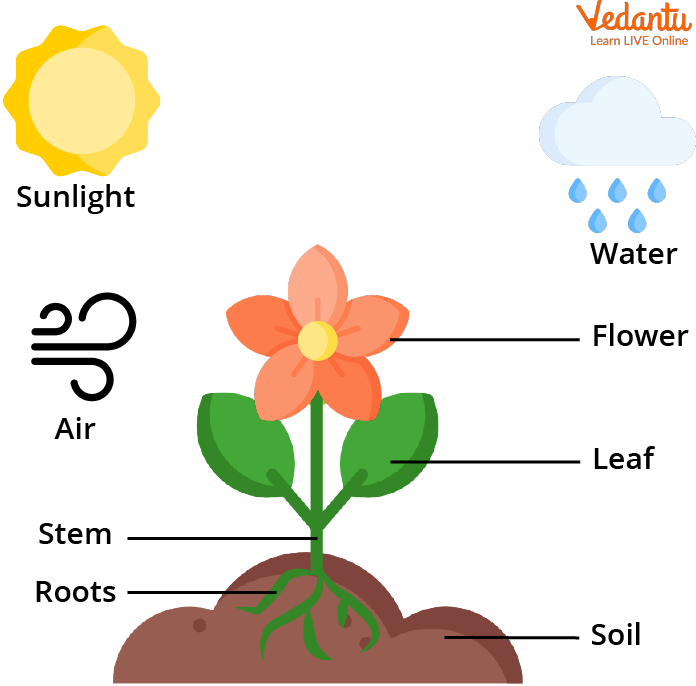
Parts of a Plant And Things That Help it Grow
What is a Flowering Plant?
Flowering plants are plants that bear flowers and fruits and form the clade Angiospermae, commonly called angiosperms. The term "angiosperm" is derived from the Greek words angeion and sperma, and refers to those plants that produce their seeds enclosed within a fruit. Angiosperms have male and female reproductive structures present in a flower. It is a characteristic feature of angiosperms.
Parts of the Flower Diagram
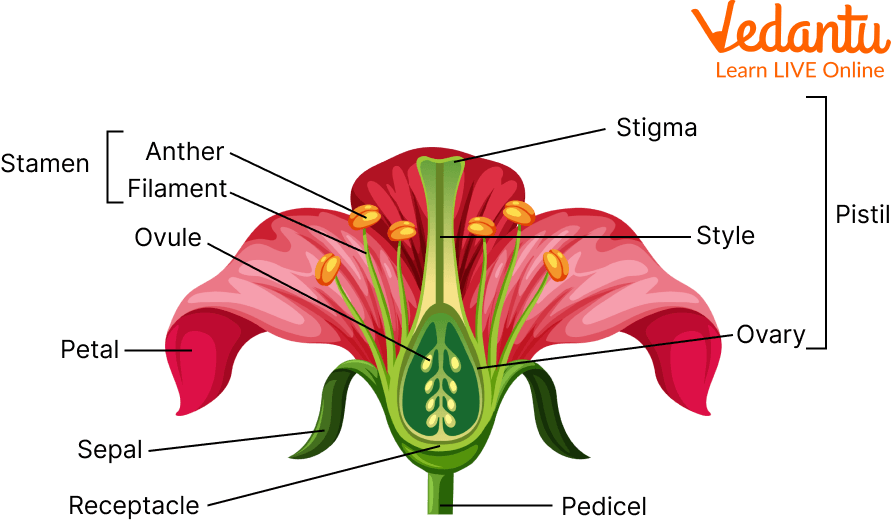
Parts of the Flower
According to the flower definition, the flower is the seed-bearing part of the plant and it contains reproductive organs like the stamen and carpel. Now, let’s move on to the parts of the flower. The four primary elements of most flowers are:
sepals,
petals,
stamens, and
carpels.
The stamen of a flower is the male component of the flower, while the carpels are the female part. The majority of flowers are hermaphrodites, meaning they have both male and female parts. Others may have one of the two parts and be either male or female. An example of the unisexual plant is the Papaya and an example of the bisexual flower is Datura.
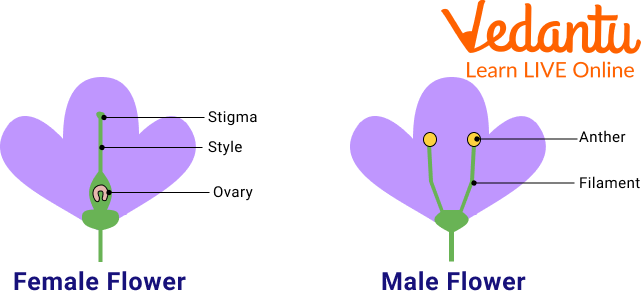
Unisexual Flowers
Peduncle: The flower stem is known as a peduncle.
Receptacle: The flower's receptacle is the section to which the stem is attached. It is small and located in the centre of the flower's base.
Sepals: The tiny, leaf-like components that sprout at the base of the petals. They make up the flower's outermost whorl.
Calyx: The calyx is the grouping of sepals. The calyx and its sepals' primary role is to protect the flower before it blooms (in the bud stage).
Petals: This layer is located just above the sepal layer. They are frequently brightly coloured since their primary function is to attract pollinators such as insects and butterflies to the bloom. The petals are referred to collectively as the corolla.
Stamen of a Flower : Stamens are the male components of flowers. The androecium is the collection of stamens.
They are grouped into two sections structurally
Filament: The long and slender portion that connects the anther to the flower.
Anthers: The stamen's head, responsible for manufacturing pollen that is delivered to the pistil or female portions of the same or another flower to fertilise it.

Stamen
Pistils: The female portions of a flower are formed by the pistil. A gynoecium is a group of pistils.
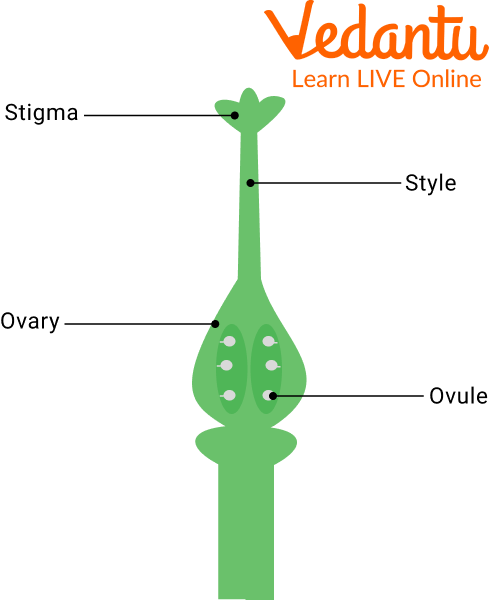
Carpel
Four Parts of the Pistil
Style: The stigma is held by the style, which is a long, slender stalk. When pollen reaches the stigma, the style begins to hollow out and forms a tube called the pollen tube, which transports pollen to the ovaries to allow fertilisation.
Stigma: This is situated at the style's tip. It serves as the pistil's head. The stigma carries a sticky material that attracts pollen grains from various pollinators or those distributed by the wind. They are in charge of starting the fertilisation process.
Ovary: The ovary is the base of the pistil. The ovules are held in the ovary.
Ovules: These are a flower's egg cells. They are kept in the ovary. When suitable pollen reaches the stigma and subsequently reaches the ovary to fuse with the ovules, this fertilised product produces the fruit, and the ovules create the fruit's seeds.
Life Cycle of a Flowering Plant
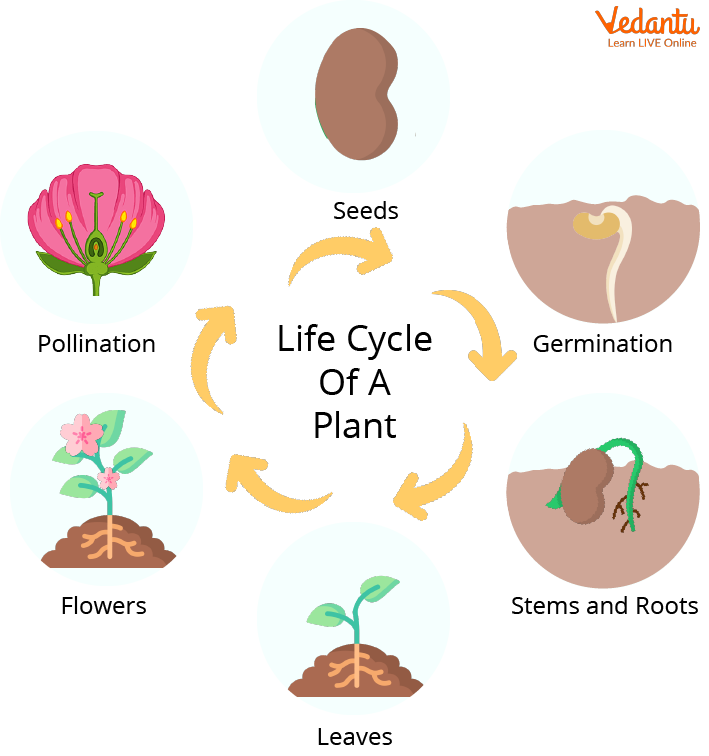
Life cycle of a Plant
In plants, reproduction is handled by the female and male reproductive organs. Now let's get started with the life cycle of flowering plants.
The life cycle of a flowering plant is very specific
Seeds are the beginning of their lives. Plants are born from seeds. In addition to having a hard outer shell, seeds have an embryo inside that is protected by that shell.
As soon as the seed is planted, it germinates. Air, water, and soil are necessary for its growth. Germination is the process by which a seed begins to grow. There are usually some small roots growing at the beginning of the process. As stems grow, they will grow into leaves.
As soon as life begins to appear above soil, it is referred to as a sprout or seedling.
As the seedling grows, it will become a fully mature plant with leaves, roots, and stems.
Plants that have reached maturity will flower. As a result of pollination, seeds will be produced by the flowers. The cycle will begin again once the seeds fall to the ground.
Summary
The part of the flower that blooms is called a flower. Seeds are produced by flowers that give rise to new plants. The main parts of the flower include the sepal, petal, stamen and carpel. The parts of stamen are anther and filament. The parts of the carpel are stigma, style, ovary and ovule.
Flowering plants are those plants that reproduce and produce flowers. They produce seeds inside the fruits. Angiosperm is the scientific name for flowering plants. In this article, we have discussed the flower definitions and flowering plants names.
FAQs on Flowering Plants: A Comprehensive Guide
1. What are the uses of flowers?
Flowers are symbols of beauty in most societies of the world. Numerous people give flowers as gifts. People also use flowers as decorations during leaves and at marriages and other observances. Flower shapes, colours, sizes, and scents vary widely. The majority of species have small, barely noticeable flowers. Blossoms that are both colourful and showy are generally considered flowers. Flowers with a lovely scent may be made into incense.
2. Write some flowering plant names.
The following are some of the flowering plant names: rose, lotus, jasmine, sunflower, daisy, tulip, magnolia, lavender, and balsam.
3. What are the three types of flowering plants?
Flowers are classified into three types: annuals, perennials, and biennials. In addition, there is a fourth form of flower that behaves like a hybrid of annuals and perennials.









